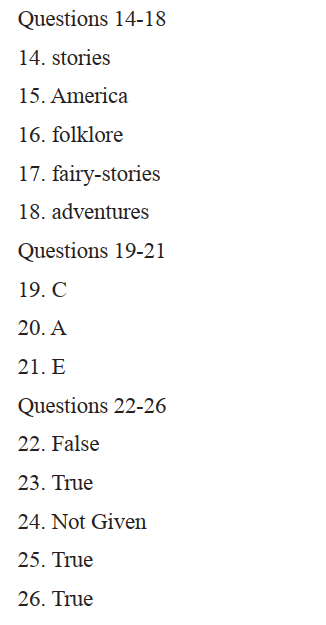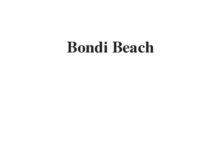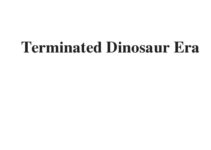Table of Contents
Passage
Bureaucracy management: The classic one
A Several theorists bridged the gap between strictly private and public sector management. Onegood example is Max Weber exploring sociologist, who explored the ideal bureaucracy in The Protestant Ethic and the Spirit of Capitalism. Bureaucratic Theory was developed by a German Sociologist and political economist Max Weber (1864-1920). According to him, bureaucracy is the most efficient form of organisation. The organisation has a well-defined line of authority. It has clear rules and regulations which are strictly followed. According to Max Weber, there are three types of power in an organisation: [l]Traditional Power, [2]Charismatic Power, and [3]Bureaucratic Power or Legal Power.
The characteristics or features of Bureaucratic Organisation
B Weber admired bureaucracy for its trustworthiness. The bureaucracy was constituted by a group of professional, ethical public officials. These servants dedicate themselves to the public in return for security of job tenure among the many advantages of public employment. There is a high degree of Division of Labour and Specialisation as well as a defined hierarchy of Authority. There are well defined Rules and Regulations which follows the principle of Rationality, Objectively and Consistency. There rules cover all the duties and rights of the employees. These rules must be strictly followed. Selection and Promotion is based on Technical qualifications. There are Formal and Impersonal relations among the member of the organisation. Interpersonal relations are based on positions and not on.

C Bureaucratic organisation is criticised because of the following reasons: Bureaucratic organisation is a very type of organisation. Too much emphasis on rules and regulations which are rigid and inflexible. It does not give importance to human relations. No importance is also given to informal groups which nowadays play an important role in all business organisations. Yet, too much importance is given to the technical qualifications of the employees for promotion and transfers. Dedication and commitment of the employee is not considered. It is suitable for government organisations. It is also suitable for organisations where change is very slow. There will be unnecessary delay in decision-making due to formalities and rules. It is appropriate for static organisations. There is difficulty in coordination and communication.
Management: A consolidated discipline
D Herbert Simon, Chester Barnard, and Charles Lindblom are among the first of those recognized as early American public administrators. These men ushered in an era during which the field gained recognition as independent and unique, despite its multidisciplinary nature. Simon contributed theoretical separation to discern management, decisions based upon fact versus those made based on values. Since one cannot make completely responsible decisions with public resources based solely on personal values, one must attempt to upon objectively determined facts. Simon developed other relevant theories as well. Similar to Lindblom’s subsequently discussed critique of comprehensive rationality, Simon also taught that a strictly economic man, one who maximizes returns or values by making decisions based upon complete information in unlimited time, is unrealistic. Instead, most public administrators use a sufficient amount of information to make a satisfactory decision:,they “ satisfice.”
E In decision-making, Simon believed that agents face uncertainty about the future and costs in acquiring information in the present. These factors limit the extent to which agents can make a fully rational decision, thus they possess only “bounded rationality” and must make decisions by “satisficing,” or choosing that which might not be optimal but which will make them happy enough. Rational behavior, in economics, means that individuals maximizes his utility function under the constraints they face (e.g., their budget constraint, limited choices, …) in pursuit of their self-interest.
F Chester Barnard was also one of the watershed scholars. Barnard published “The Economy of Incentives” (1938),in an attempt to explain individual, participation in an organization. Barnard explained organizations as systems of exchange. Low-level employees must have more incentive to remain with the organization for which they exchange their labor and loyalty. The organization (and higher level employees) must derive sufficient benefit from its employees to keep them. The net pull of the organization is determined by material rewards, environmental conditions, and other intangibles like recognition. He gives great importance to persuasion, much more than to economic incentives. He described four general and four specific incentives including Money and other material inducements; Personal nonmaterial opportunities for distinction; Desirable physical conditions of work; Ideal benefactions, such as pride of workmanship etc.
A new humanist era: Rethinking power and management
G Humanists embrace a dynamic concept of an employee and management techniques. This requires a theoretical shift away from the idea that an employee is a cog in the industrial machine. Rather, employees are unique individuals with goals,needs, desires, etc.
H The humanist era ushered in other possible interpretations of such topics as power and management. One of the most significant was Douglas McGregor’s “Theory X and Theory Y”. McGregor’s work provided a basis for a management framework, a structure upon whose rungs the classic and new-aged management might be hung . First, commonly held by early management theorists, Theory X begins with the assumption that humans possess an inherent aversion to work. Employees must therefore be coerced and controlled if management expects to see results. Further, lazy humans prefer direction bordering micromanagement whenever possible.
I Theory Y is much more compatible with the humanist tradition. This begins with the assumption that work is as natural for humans as rest or play. Further, employees will direct and control themselves as they complete objectives. Humans learn naturally and seek responsibility. Consequently, managers need only to steer employees in a cooperative manner toward goals that serve the organization. There is room for many to create and share power.
J The Z-Organization can be thought of as a complimentary third element to McGregor’s dichotomy . Z-organizations are a Japanese organizational model. Similar to Theory-Y management, Z organizations place a large degree of responsibility upon the employees. Further, relatively low-level employees are entrusted with the freedom to be creative, “wander around the organization,,and become truly unique, company-specific employees. However, employees achieve only after ”agreeing on a central set of objectives and ways of doing business“ In Z Organizations, decision-making is democratic and participatory. Despite the many advantages of this organizational model, there are several draw-backs. These include the depredation of a large professional distance—de-personalization is impossible in Z-organizations. Since, in reality, there is high percentage of workers Would like work for the financial return than the job objectives. A high level of self-discipline is also necessary.
Questions
Questions 14-21
Choose Two appropriate letters and fill in boxes 14-15.
What are the features and advantages for Bureaucratic Management?
A There are equal opportunities coming from little hierarchy of authority among companies.
B employees’ promotion can be much fairer which is based on job duties not on characters
C employees enjoy a greater freedom of duties than their strict right
D Selection and Promotion is based on mastery of new technology.
E These employees can dedicate themselves to the public for stability of a long term job
Choose Two appropriate letters and fill in boxes 16-17.
What are the limitations for the ideas of Bureaucratic Management?
A Commitment of the employee is not taken into consideration enough.
B There is difficulty in decision-making based on formalities and rales.
C Employees are casually oragnised as no importance is given to formal groups.
D There is difficulty in enforcement of rules and regulations
E It is not applicable to dynamic organisations where change is very fast.
Choose Two appropriate letters and fill in boxes 18-19.
What are the aims of management as Douglas McGregor’s work of the “Theory Y”
A Employees must be coerced and controlled if management expects to see results.
B Employees has natural tendency for rest or play.
C Humans will not automatically seek responsibility.
D managers may guide employees in a cooperative manner toward objectives
E There is little room for manager to designate or share his power.
Choose Two appropriate letters and fill in boxes 20-21.
What are the limitations for the “Theory Z”
A decision-making is democratic and participatory
B organization mode has inherent design fault
C not all employee set higher interest in the job than that of wages
D Personalization remains un-eliminated in organizations E self-discipline is an unnecessary quality
Questions 22-26 Use the information in the passage to match the people(listed A-E) with opinions or deeds below. Write the appropriate letters A-E in boxes 22-26 on your answer sheet.
NB Some people may match more than one ideas
A Mark weber
B McGregor
C Herbert Simon
D Chester Barnard
E Charles Lindblom
22 Employees like to follow professional, ethical public officials to secure a job.
23 Highly effective can be achieved only after “agreeing on a core of objectives and method of doing things
24 Managers need to take the employees’ emotional feeling, besides the material rewards, into incentives system.
25 Individuals can maximize their self-interest when all the budget and choices are utilised well
26 The assumption that humans possess a natural dislike to work who ought to be forced and controlled
Answers



